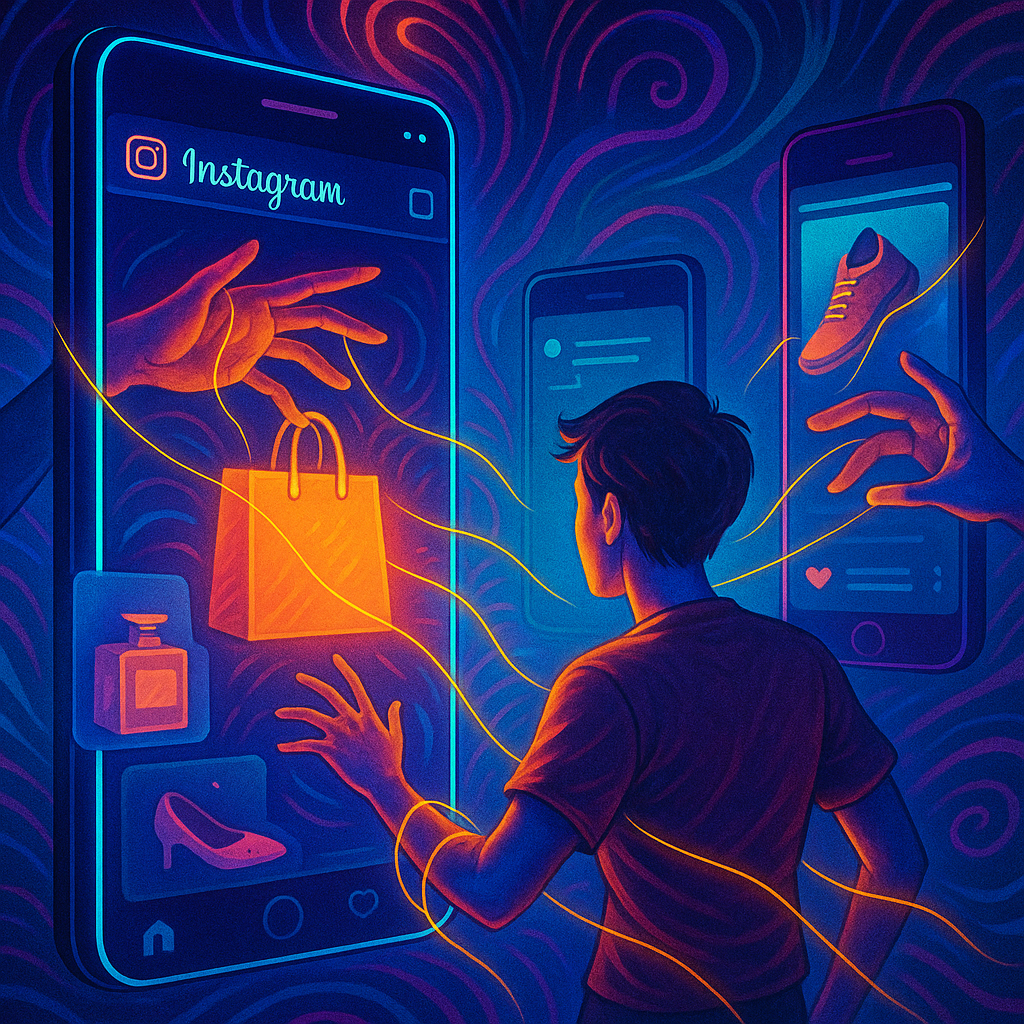“You thought you wanted it. But in truth—it was engineered so you couldn’t resist.”
Every day, as you scroll through Instagram or TikTok, you’re not just looking at pretty photos or funny reels—you’re walking through a psychological marketplace. Behind every ad, influencer post, or “limited offer,” there are carefully crafted techniques designed to bypass logic and trigger desire.
Let’s peel back the curtain and expose the tricks that brands use to make you click “Add to Cart.”
1. The Power of Scarcity & Urgency
People fear missing out more than they fear wasting money. Marketers exploit this through:
- Countdown timers (“Offer ends in 2 hours!”)
- Low stock warnings (“Only 3 left!”)
- Limited editions (“Once it’s gone, it’s gone!”)
This taps into loss aversion, a core psychological bias where people act irrationally to avoid missing out.
2. Social Proof & Herd Mentality
Humans are tribal. We look to others for cues on what’s valuable. Social media makes this easy:
- Likes & shares act as digital applause, signaling popularity.
- Influencer endorsements tap into parasocial trust—followers feel like friends are recommending products.
- Testimonials & UGC (user-generated content) reduce skepticism by showing “real” people using the product.
If “everyone” is wearing those sneakers, your brain convinces you that you should too.
3. Authority & Status Signals
Brands and influencers subtly (or not so subtly) leverage status:
- Blue checkmarks imply trustworthiness.
- Celebrity collaborations borrow authority from fame.
- Luxury cues (gold fonts, slow-motion reels, premium packaging) signal exclusivity and power.
People don’t just buy products—they buy the status upgrade that comes with them.
4. Emotional Triggers Over Logic
Emotions, not rational arguments, drive most buying decisions:
- Aspirational posts: “This could be your life if you had this product.”
- Fear-based ads: “Don’t be left out, don’t be unprepared.”
- Cute animals, kids, or nostalgia hooks: These create emotional associations that bypass skepticism.
The product becomes less about utility and more about identity.
5. The Illusion of Choice
Ever notice how shops online offer three versions of a product—Basic, Standard, and Premium?
Most buyers pick the middle option, thinking it’s rational. In psychology, this is called anchoring and decoy pricing.
Instagram shops and ads replicate this by showcasing tiered bundles, making the “target” choice feel like the most reasonable one.
6. Micro-Commitments
Ever clicked “learn more,” voted in a poll, or swiped up “just to see”? Congratulations—you’ve already been hooked.
This is called the foot-in-the-door technique. Once you make a small action, you’re more likely to make a bigger one (like a purchase).
Stories, quizzes, and interactive stickers are subtle psychological hooks to ease you down the sales funnel.
7. Neuromarketing Cues
Social media ads are fine-tuned to stimulate the brain’s reward system:
- Bright colors like red and yellow trigger excitement and urgency.
- Faces looking directly at you create subconscious connection.
- ASMR sounds in reels stimulate sensory craving, often linked to food and beauty products.
It’s not random—it’s brain hacking at scale.
8. The “Free” Trap
Freebies, discounts, and “only pay shipping” offers exploit the zero-price effect—the irrational joy we feel when something is free.
Once hooked, you’re more likely to make impulse add-on purchases.
9. Consistency & Storytelling
Brands craft narratives around products. Instead of selling a face cream, they sell a “self-love ritual.” Instead of a sneaker, they sell “belonging to a movement.”
Humans crave stories—and when you buy, you’re not buying an object, you’re buying a role in the story.
Why It Matters
Understanding these tactics is not just about resisting manipulation—it’s about reclaiming choice. When you know the playbook, you’re no longer a pawn in the digital marketplace. Instead, you can ask:
- Do I really want this, or was I nudged into wanting it?
- Am I buying for myself, or for the image I think others will admire?
Once you see the strings, the puppet show loses its magic.

